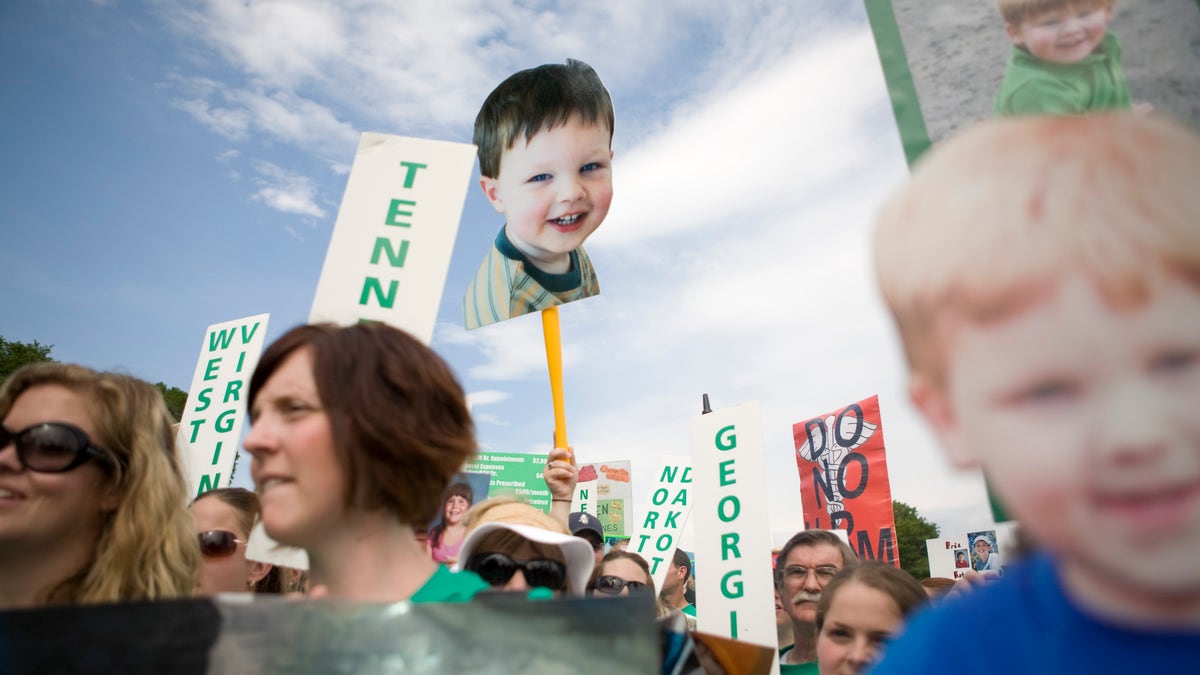
People hold signs showing the faces of children with autism to raise awareness on development disorder. (Getty)
There are so many different genetic forms of autism that using the singular term, autism, is misleading, researchers say.
“We believe a better term to use is ‘the autisms,’ or ‘the autism spectrum disorders’ (that is, plural),” Dr. Stephen W. Scherer told Reuters Health by email. “There are many different forms of autism. In other words, autism is more of a collection of different disorders that have a common clinical manifestation.”
The DNA of affected individuals varies remarkably, his team found. Two-thirds of brothers and sisters with what’s still called autism spectrum disorder, or ASD, showed different genetic changes.
Scherer, from The Hospital for Sick Children in Toronto, Ontario, Canada, is part of a team that aims to identify all the genetic changes in individuals with ASD.
In the U.S., the Centers for Disease Control and Prevention (CDC) estimates that 1 in 68 children (1 in 42 boys and 1 in 189 girls) have an autism spectrum disorder. Recent estimates in Europe, the CDC says, are that one to two percent of children there are affected.
When Scherer's team looked for genetic changes in the entire DNA from 85 pairs of brothers and sisters with ASD and their parents, they found an average of roughly 73 genetic changes per set of DNA -- but only 36 of the 85 families (42.4 percent) had mutations that researchers could relate to genes already linked in some way to ASD.
And when they looked at these 36 families, only one-third of the affected brothers and sisters carried the same mutation. Siblings with different mutations showed different autism symptoms, while siblings that carried the same mutations had similar autism symptoms, the researchers reported in Nature Medicine.
“This emphasizes that these kids have different forms of autism (each their own snowflake) and need to be treated in their own special way,” Scherer said.
“Now that we know some of the genes involved in the core features of autism, we have targets to develop new drugs and that is ongoing mainly in biotech companies and pharmaceutical companies,” he said.
In the meantime, he noted, “The best treatment for the core features in the autisms is actually intensive behavioral intervention. For this, for the best outcomes, you need to start early.”
To analyze DNA, the researchers used a technique called whole-genome sequencing. They added the results to the massive Autism Speaks-Google MSSNG database that will ultimately contain genomes of “10,000s of individuals with autism(s),” Scherer said.
This will pave the way for better treatments, he believes. “In the future, once there is a suspected diagnosis of autism, the (child’s) genome will be sequenced and doctors will compare it to the MSSNG database to find out what form of autism that child has,” he said. “With this information in hand they can then better inform the family of what to do, and equally important, what not to do.”
More information about MSSNG can be found at www.mss.ng.
